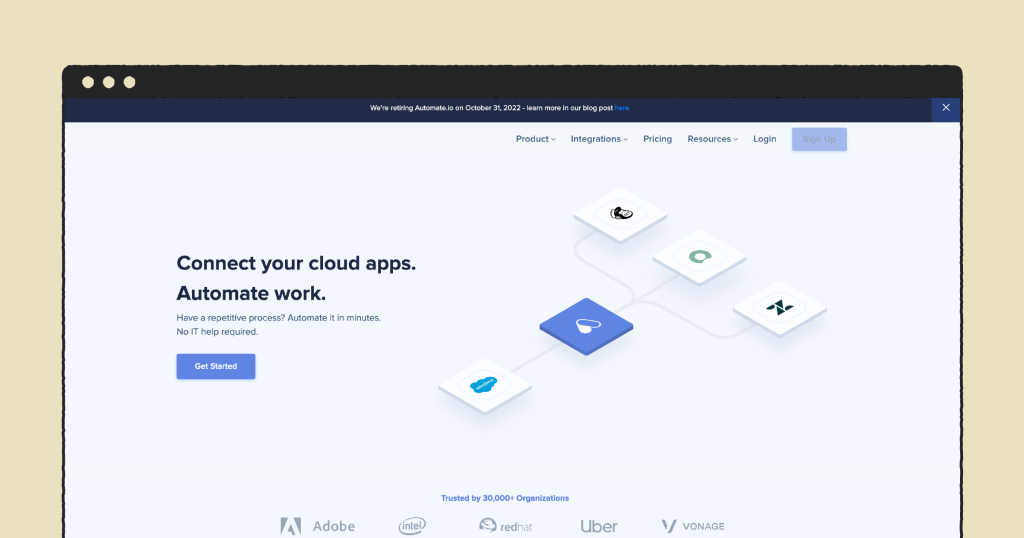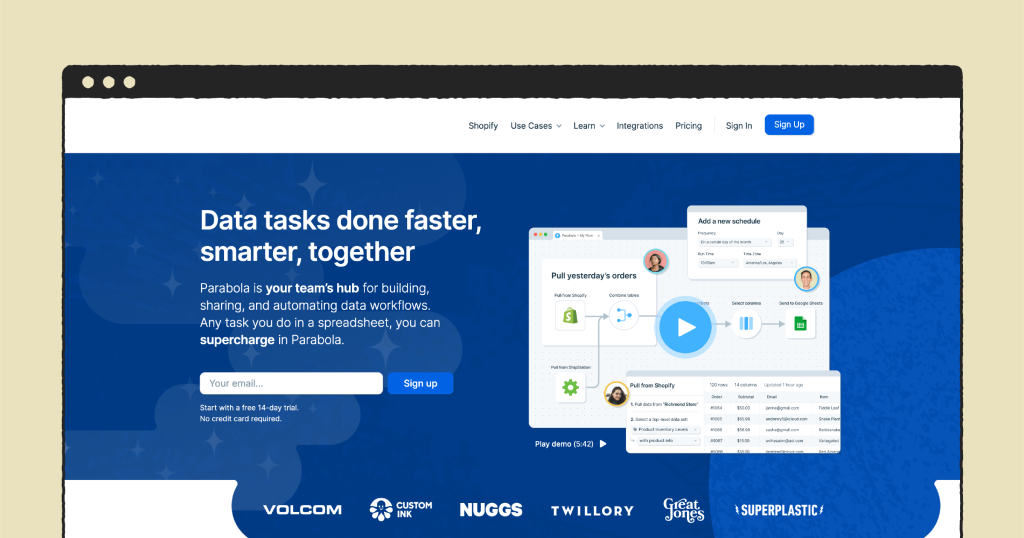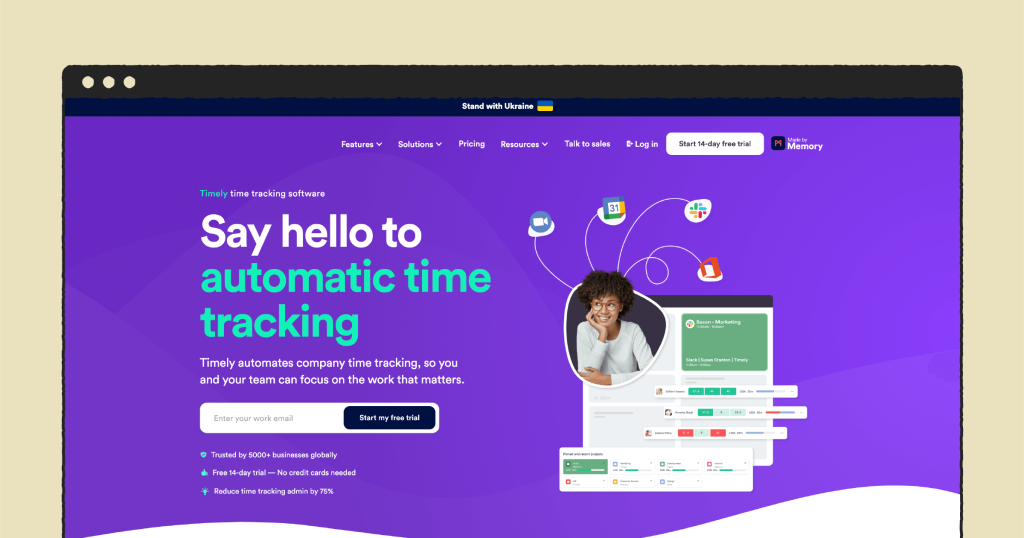Routine and repetitive tasks can take a significant chunk of your time; irreplaceable minutes turn into hours that could be spent elsewhere with far greater ROI.
How much time are we talking about, exactly? It appears around 60%, according to a detailed Asana report.
Meaning, that most of your precious time is allocated for monotonous, low-level tasks like messaging pings or nonessential meetings, or spent requesting feedback and approvals, or making sure docs are organized and teams are in the loop, with each item and person involved at just the right stage — and on and on in an endless loop.
You realize you’re the conductor of a suboptimal symphony, you know it’s crazy inefficient, and at some point you’re bound to ask, “Hold up — isn’t there a way to streamline the work part of my workflow?”
As it turns out, yes, there very much is a way.
In this article, we’ll talk about how workflow automation tools that boost your productivity are accessible and applicable now — like, one-click now — and help you discover the right fit for your team, both for today’s needs and going forward.
What is workflow automation software?
At the very core of automation lies the idea of making your daily tasks follow a unified pattern.
Such a pattern can be as straightforward as following two basic commands, “if” and “then.” (IRL example: “if my recipient hasn’t replied to my last email within three days, then alert me so I can send a follow-up message.”)
This simply means the software is designed to recognize that “if” a certain event occurs, that event triggers a “then” action which is a response to the conditional “if.”
The parameters, of course, can vary according to business need — from client-facing outreach to intra-company collaboration — what’s important is that you have the power to track engagement and respond accordingly.
And measuring engagement is just the tip of the iceberg. Workflow automation software has gained popularity across all aspects of daily business activities, because it’s a great way to reduce the number of operational mistakes and allow the business to scale effectively.
These tools are easy to access for you and your team, and the benefits are intuitive — below are concrete examples of how workflow automation software can help optimize several business functions:
| The business area | How automation works |
|---|---|
| Document management | Organizing effective document workflows, sending reminders, approving documents |
| Sales | Pinging prospects, scheduling demos, tracking sales pipeline, managing contacts |
| Marketing | Automating social media posting and email outreach |
| Project management | Scheduling deadlines based on employee workload, time tracking |
What should I factor in when choosing a workflow automation tool?
When deciding which way to go, start with your unique situation: Will the product you select be able to scale quickly with you, should your demands ever increase? (Or once they increase — because obviously you’re gonna grow your company!)
Consider integration capabilities seriously — after all, how helpful is a tool that’s so proprietary it doesn’t play well with others?
And while integrating with other apps is a must-have, the ability to customize as needed may be every bit as relevant for your BI needs.
Usability is, obviously, important — if you want your team to focus on accounting and invoicing, then look to companies that emphasize as much in their promotional material.
Likewise, if you need a product for email campaigns or are leveling up project management skills across your company, well, that’s two different directions to factor in right there.
Of course, we’re biased at PandaDoc — our platform solution stitches together complete document management with end-to-end workflow automation, including a growing list of powerful integrations that give you more power to nail each and every task.
But we’re also highlighting the strengths of other companies’ unique offerings in the paragraphs that follow.
Ok, enough intro — let’s get to it!
Here are the 10 apps in our winner’s circle
Integrations, usability, customization, and overall performance — there are several excellent workflow automation apps out there, and we’ve compiled a list of the top ten (starting with our favorite!) that you can benefit from using right away.
01. PandaDoc

Obviously, we see ourselves at the top of the list. PandaDoc is a 360-degree workflow solution for creating, editing, and signing documents. It’s a very different beast from all the other products listed below.
Whether you need software for eSignatures, automated proposals, sales and marketing, and/or secure document workflow, PandaDoc will give you the proper means to accelerate your business pipeline and get documents signed in the blink of an eye.
As mentioned above, over 30 apps and counting (including Slack, Zoom, Canva, Pipedrive, and even Zapier itself!) now seamlessly integrate with PandaDoc to provide a smooth document management experience across various digital frontiers.
Users enjoy the level of template customization that PandaDoc can provide, according to G2. Analytics and document tracking are other great features that users seem to find very helpful.
At the same time, some potential UI improvements have been suggested as users tend to find some aspects slightly confusing, like a home button.
Along with email support and an extensive product knowledge base, PandaDoc offers chat support so you can ask questions and get answers when you need them most.
| Essentials | Business | Enterprise |
|---|---|---|
| $19 per month per user | $49 per month per user | Custom pricing solution |
| 1. Unlimited legally binding eSignatures with audit trail 2. Unlimited docs and templates 3. Rich media drag and drop document editor 4. Real-time tracking and document insights |
All the Essentials plan features plus: 1. Unlimited documents and eSignatures 2. CRM integration for HubSpot, Pipedrive and more 3. Content library 4. Custom branding 5. Approval workflows |
All the Business plan features plus: 1. Single sign-on (SSO) 2. Salesforce and Zapier integrations 3. Team workspaces and custom user roles 4. Redlining and versioning 5. Performance reporting |
| Start a free trial | Start a free trial | Contact sales |
02. Zapier

You can think of Zapier as a “conductor” that brings other workflow automation apps together. As a user, you can create trigger chains using Zapier with over 3000 apps like Slack, DropBox, Gmail, etc.
Premade workflows and simple data transfer between the apps make Zapier another excellent choice for those expecting to see the immediate benefits of workflow automation at a large scale.
Zapier is a preferred choice for small and mid-sized businesses, according to Capterra. It also provides a discount for startups and is generally considered to be leading the market when it comes to the number of supported apps.
As the user reviews suggest, Zapier typically has very positive feedback with some minor complaints about pricing policy and the app’s complexity. At the same time, users praise the app’s broad capabilities.
Zapier is also accessible to those of us that have zero coding experience. And you can enjoy a free version, limited to 100 tasks and 5 Zaps (workflows).
Paid subscriptions range between $19 and $599 per month, and can include faster upload time, custom logic — paths, shared workplaces, premier support, etc.
03. Automate.io

Automate.io works similarly to Zapier, but it allows you to build a more complex logic — users often choose Automate.io over Zapier for greater flexibility and level of customization.
As such, your triggers, time delays, and condition checkers are applied to create advanced workflows and streamline interaction between the apps. Over 200 apps are currently supported by Automate.io.
Automate.io has 24/7 support that can be provided by a live representative and also via chat. Online training is available as well.
Automate.io also appears to be slightly cheaper, alongside having fewer integrations available. It has a smaller learning curve and far friendlier customer support if Capterra is to be believed.
Automate.io offers a free trial that includes five single-action bots and 300 monthly actions.
Paid subscriptions include a starter (Personal) and a top package (Business), which will cost you $9.99 and $159, respectively, per month.
04. IFTTT

IFTTT is a “Zapier for mobile apps” — another connector, one built for both Android and iOS devices. Unlike Zapier and Automate.io, however, it’s designed with the casual user in mind.
If this applies to you, expect it to automate your daily routines and tasks, such as getting periodic weather forecasts updates, posting and reposting your content on social media, syncing your “to-do” lists with Alexa, and much more.
A great thing about IFTTT is its focus on smart home automation, which is popular among iOS and Android users. IFTTT is easy to use but is limited to daily usage and organizing your personal affairs.
There is overwhelmingly positive user feedback about IFTTT; however, some users on G2, GetApp, and other reviewing platforms complained about using triggers.
The IFTTT’s plans start at $150 and $300, per month, for Pro and Pro+ packages, respectively. There is also a free version available for you to check out, with five automated workflows and a standard speed.
05. Kissflow

Kissflow promotes a digital-first culture by providing companies with a centralized workspace, collaboration tools, and automated workflows.
Kissflow helps you integrate with a wide range of platforms (including Zapier iself); although, unlike Zapier and Automate.io, it is considered the best value for avid Google Apps users.
Access to many cloud-based apps and hundreds of pre-made templates allow you effective algorithmic task assignment, reporting, analytics, and contextual collaboration.
Kissflow has very favorable pricing, making it very accessible for you as an individual user. It’s entirely no code and very intuitive, according to the G2 reviews.
Kissflow launched a new version last year, and migrating to it didn’t go flawlessly. Some users complained about disappearing email histories and no longer functioning workflows.
Kissflow doesn’t provide you with a free version, although a custom package can be made on request. Basic subscription is only $10 per month,while the top-tier package (fully loaded) is $19 monthly.
06. Mailchimp

Mailchimp is a go-to email automation platform among marketers. But it also offers you capabilities to create landing pages, manage prospects via CRM, schedule appointments, and run ads.
Mailchimp is exceptionally user-friendly with its drag-and-drop interface and has everything a small business needs to grow.
At the same time, it has excellent integration possibilities, which makes Mailchimp greatly appreciated by startups looking to integrate it into their products-in-the-making.
Mailchimp has several great features, including segmentation and email template builder.
Mailchimp might be an excellent starting tool for you and your team — it’s pretty much free to use on (a free basis that allows 10,000 monthly sends) which gives you a taste of what this tool is capable of.
Users have to rely on using Zapier or Automate.io to set up some dynamic rules (e.g., automatic email reminders for shopping cart abandoners), which is a minor drawback of using Mailchimp.
Mailchimp’s paid plans are Essentials ($11 per month), Standard ($17 per month), and Premium ($299 per month), which includes more advanced support and some automation features.
07. Parabola

Parabola is geared towards automating marketing and sales reports and inventory management.
Unlike similar solutions such as Zapier or Automate.io, Parabola is your tool for creating very personalized and customized reporting workflows that involve pulling data from multiple sources and implementing complex attribution logic.
As a stakeholder using Parabola, you’ll have complete visibility over your team’s marketing, sales, and logistics operations.
Parabola is accessible to all users, regardless of their skills. It’s partially due to the intuitive UI that so much freedom is provided in manipulating various data sources when creating reports — something you won’t find typical in data science and engineering.
That said, once you build a significant amount of flows, it can get overwhelming to manage them all.
Parabola only has one advertised paid subscription plan, Plus ($80 per month), as their Basic plan comes free for you to try out.
Businesses with extensive needs can get a custom plan (Advanced) by contacting Parabola’s sales team.
08. Power Automate (Microsoft Flow)

If you’re at home with Microsoft products, then Power Automate is worth your time to consider.
The product takes automation capabilities to the next level by bringing together legacy desktop systems, cloud-based apps, and mobile apps.
Microsoft targets the enterprise segment with Power Automate, describing it as “a unified platform with API- and UI-based automation.” A great advantage of Power Automate is its seamless integration with your Microsoft 365 suite.
Power Automate would ideally require some basic coding experience, although it doesn’t take much time to learn it.
But once you’re able to utilize its full potential, you’ll get access to compelling automation features, which allow creating flows with an enormous amount of tasks.
The other side of the coin is that Power Automate appears a bit difficult to use without any coding background, according to Capterra.
And despite the app’s extensive capabilities to handle complex workflows, it seems to be crashing under higher loads.
The pricing for Power Automatte starts at $20.60 per month for individual users and can go up to $137.60 per month if you run a large organization.
09. Timely

Timely is a great help for anyone requiring services using the time & material (T&M) framework, specifically freelancers, startups, and consultants.
Timely is available both as a cloud-based and desktop app, allowing for tracking everything you work on, eliminating the necessity of manual input.
Time logs can be later used to help you invoice billable hours or optimize your daily performance.
Timely is a simple yet effective tool that does what it’s meant to do, and does it well.
However, some users on GetApp seem to be overwhelmed by the number of features that Timely has, and not all of those features seem to be working correctly.
Timely’s low-tier subscription is $8 per month, while medium- and high-tier subscriptions will cost you $14 and $20 per month, respectively.
10. Asana

There’s no lack of excellent project management tools (with Jira probably the most well-known in the IT community).
However, what makes Asana stand out is its incredible simplicity — specifically if your team’s projects don’t require an extra layer of sophistication.
Setting up projects is extremely fast in Asana, even if it involves creating cross-functional teams and checking off work progress (Asana will send a notification to each of your teammates involved in the project upon task completion).
Asana is great for managing small teams — you get access to the essential features entirely for free (including mobile apps, time tracking, and API integrations).
Although once you hit a certain number of seats, things can start to get slightly confusing as far as pricing is concerned.
One user further commented on G2, “Asana makes it very easy to pay for more users. But deleting users is very difficult, almost impossible”.
Asana’s paid subscriptions include Premium and Business, priced at $10.99 and $24.99, per month, respectively.
Wrapping up
We’ve covered some of the most interesting workflow automation solutions in our top ten list. However, it’s worth mentioning that this isn’t an exhaustive list.
Although based on public reviews, this list also reflects our own preferences and opinions.
And there exists a large variety of other workflow automation solutions out there — we’ve just scratched the surface, so be sure to do some looking around yourself!
And if you’d like to experience the PandaDoc difference, here is your free 14-day trial.
Frequently asked questions
-
First of all, think about whether you need a tool for personal or professional usage. Some apps, like IFTTT or Timely, mainly fall within that first category, while Asana or Zapier tend to be adopted more by professionals.
-
The best way would be to “test-drive” those tools that provide a free trial. This way, you can try out a new app risk-free before committing to paying a fixed price.
Disclaimer
Parties other than PandaDoc may provide products, services, recommendations, or views on PandaDoc’s site (“Third Party Materials”). PandaDoc is not responsible for examining or evaluating such Third Party Materials, and does not provide any warranties relating to the Third Party Materials. Links to such Third Party Materials are for your convenience and does not constitute an endorsement of such Third Party Materials.


